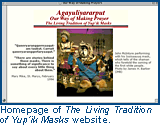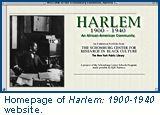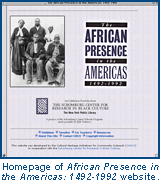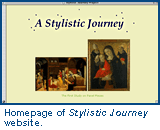Reaching New Audiences: Cultural Content on the Internet
From: University of Michigan | By: C. Olivia Frost
Fathom: In some ways, you were already pondering the challenges and opportunities of the Internet before there was a World Wide Web. What kind of ideas were you considering as a graduate student in the 1970s?
C. Olivia Frost: I had developed an interest in cataloging and classification, with a particular focus on what we call non-book materials. That is, I was considering how to best organize maps, images, sound, three-dimensional materials, and so forth. At that time, well before the digital age, it seemed intriguing to consider how we might provide access to those kinds of materials in ways other than the traditional method of listing them by author or title. I began to think, Wouldn't it be interesting to provide intellectual access to those materials by geographic region, by culture, by use of the material, by gender, etc.? It wasn't until the late 1980s and early 1990s that digital technologies made it possible to do many of the things that I had just dreamed about as a graduate student.
It was significant that, in a digital presentation, we were able to provide access to the image itself, not just a description of it. We could organize the images into broad sets, and then let viewers sort through the images on their own, because an image can be browsed in a way that's different from a text document. You couldn't browse through 20 books in a matter of seconds, but you can do that with images because an image can be comprehended all at once.
Fathom: One of the first digital cataloging projects you worked on helped spark the creation of CHICO. How did that come about?
Frost: In 1994, we began work on a research project that organized about 2,000 images from art history. We used digital images from the University of Michigan Museum of Art and a few other collections. In the three years we worked on it, we looked at some of the questions that I had considered when I was back in grad school.
At the conclusion of that project, we put the collection up on the Web and began to get a lot of mail from ordinary folk. (We hardly ever got questions from researchers, except to say something like, "This artist didn't die in 1403; it was 1402.") Instead we got questions from school kids, from teachers, from people who said, "I just happened to come upon your site, and maybe you could explain such-and-such."
That response led us to consider how digital access to this kind of cultural content can really reach a broader audience. And my students and I began to think about how cultural heritage content could be approached in different ways, using these new technical tools, and how these tools could enhance — not replace — but enhance a real-world experience.
Fathom: How do you think the Internet can enhance a real-world experience?
Frost: We do not presume that the digital representation of this content is a substitute for actually hearing a concert or seeing an exhibit of images, but it's impossible to see — in person — all of the content that is available on the Web. Even if you had the means to travel to these different places, you wouldn't have the time.
When it's not physically possible to have access to the real item itself, the Web can provide a very handy means of making these materials accessible in an "anytime, anywhere" format. And so that's one of the ways in which the digital experience is different, and can enhance the real experience.
Another way is by providing context about what you see or hear, so that you can understand it better. Sometimes context is provided by making connections. "This phenomenon in art actually occurred at the same time as a related phenomenon, which exemplifies the same themes," for example. That's something that the Web is particularly well equipped to do.
Then, thirdly, it provides what I call "engagement opportunities" — the opportunity to interact with the object, or with other people in viewing the object. It offers the possibility, for example, for school kids to share what they've seen, talk to each other, talk to the artist and the curator, and to build on what they have seen, so that they just don't become consumers of the experience. They actually can use the experience to create their own cultural content.
It's that opportunity for interactivity and for engagement that makes the Web a different way to experience cultural heritage content. So looking at those three capabilities of the Web experience, CHICO tried to create projects that exemplified those aspects.
Fathom: Let's look at a few examples of CHICO websites. In each case, a team of graduate students from the University of Michigan's School of Information puts together a site to explore a particular topic, often in collaboration with an exhibit or collection from a museum. But every CHICO site is quite unique. How did "The Living Tradition of Yup'ik Masks" come about?
Frost: I had visited the National Museum of the American Indian, which is one of the Smithsonian museums, and let them know about CHICO's interests and capabilities. Later, one of the curators called, saying, "We have a gallery of masks from the Yup'ik tribe in Alaska. We already have a digital display in the museum, but we'd like something that we could put on the Web to be more broadly accessible. Can you help us out?"
Smithsonian museums, and let them know about CHICO's interests and capabilities. Later, one of the curators called, saying, "We have a gallery of masks from the Yup'ik tribe in Alaska. We already have a digital display in the museum, but we'd like something that we could put on the Web to be more broadly accessible. Can you help us out?"
I said, "I'll think about it," but I was thinking, I don't know that we have anyone on the CHICO team with the necessary expertise for this project. But the next day, a student popped in and said, "I'm from Alaska, where I worked with the Yup'ik tribe, and I have a background in instructional technology. I'm looking for a project that would connect to those experiences."
So that's our best example of how some of the projects are opportunistic.
In that case, other students saw images of the masks and became interested in the Yup'ik culture and they liked the concept, so they came on board and worked on the project.
Fathom: CHICO has collaborated on two projects with the Schomburg Center for Research in Black Culture, which is part of the New York Public Library. How did you begin working with that group?
Frost: The Harlem Renaissance exhibit, which is another one of our most prized exhibits, came about as a result of a courtesy call to the Schomburg Center. The School of Information was interested in maintaining ties with New York Public Library, so the dean at the time said, "Why don't you go pay a courtesy call on the Schomburg, and just let them know we're here and what we're about." When I was showing them some of the sites that CHICO did, they brought out this portfolio of images from the Harlem Renaissance and said, "Could you do some thing with this?"
exhibits, came about as a result of a courtesy call to the Schomburg Center. The School of Information was interested in maintaining ties with New York Public Library, so the dean at the time said, "Why don't you go pay a courtesy call on the Schomburg, and just let them know we're here and what we're about." When I was showing them some of the sites that CHICO did, they brought out this portfolio of images from the Harlem Renaissance and said, "Could you do some thing with this?"
So that's how that project took off.
The other project with the Schomburg Center was "The African Presence in the Americas: 1492-1992."
Working with the Schomburg Center is a good example of increasing the accessibility of a collection. Typically, in an archive or a museum, only a tiny portion of the collection is accessible for viewing at any given time. Most of the collection is in storage because the museum can only display so much.
collection. Typically, in an archive or a museum, only a tiny portion of the collection is accessible for viewing at any given time. Most of the collection is in storage because the museum can only display so much.
Sometimes the works are relatively inaccessible, even if you're in the location. The Schomburg Center is essentially an archival collection. Its materials are very fragile and there have to be constraints in their use.
It's difficult for an archive to provide the kind of access that they would like to, and one of the things that the Web can do is to make these materials more accessible, especially for young people in middle school and high school.
Fathom: There's a site titled "Stylistic Journey" that takes a different approach.
 Frost: That one shows the aspect of CHICO that I mentioned before, when I talked about engagement. Sometimes the engagement is such that students will see art, and then they'll be inspired to create their own art.
Frost: That one shows the aspect of CHICO that I mentioned before, when I talked about engagement. Sometimes the engagement is such that students will see art, and then they'll be inspired to create their own art.
This site is an example of seeing art in a museum, and hearing about it, and then creating art. This is how the Web can be used to enable people to create their own collections, and then share them. And so that's one capability of the Web that lends itself particularly well to this kind of purpose.
Fathom: How are the projects financed?
Frost: The School of Information has received a substantial degree of support over the past several years from the W.K. Kellogg Foundation. CHICO is one of several Kellogg projects in the school that provide students with opportunities for practical engagement of information technologies in community settings. This emphasis on communities coincided with the time that CHICO first started, and that's why the community is an important part of what we do.
Fathom: Do the projects always come from outside sources, such as the Schomburg Center?
Frost: No, occasionally students will develop projects from ideas of their own, such as a site we did on ancient amulets and another on Pewabic pottery.
Fathom: What do students learn by creating one of these Web sites?
Frost: Every CHICO project is a multifaceted project that involves a team of students. One of the things we emphasize at the School of Information is how to work as part of a team on a project that has many dimensions, with different people bringing different kinds of skills to the project.
Our school draws in students from many types of backgrounds. We have, I think, 50 disciplines represented in our class. Some students have backgrounds in the humanities, others in computer science, or history. On any project, there'll be a student who knows more about the arts who contributes from that perspective, and then there'll be more of a techie — but a techie who wants to be involved in a project that has interesting content. And then there'll be a student who's very good at organizing things, and getting the project under way, keeping people on task. It's a good way of giving our students an opportunity to contribute in their own way while they learn new skills.
Some of them will work on the images and create the Web content, others will work on the copyright issues, others will work on management of the Web site, others will work on helping me write up the descriptions, and the ones who are most interested in K-12 schools will work with local teachers on the lesson plans.
Fathom: Why do you think it's important to feature multicultural content on the Web?
Frost: We want to create content that will have relevance to many students in under-resourced communities so they can see themselves. And not just see themselves, but others as well. So that, for example, Native American kids can see cultures of Latino and African Americans.
Relevant Links
Cultural Heritage Initiative for Community Outreach (CHICO)
(www.si.umich.edu/CHICO/)